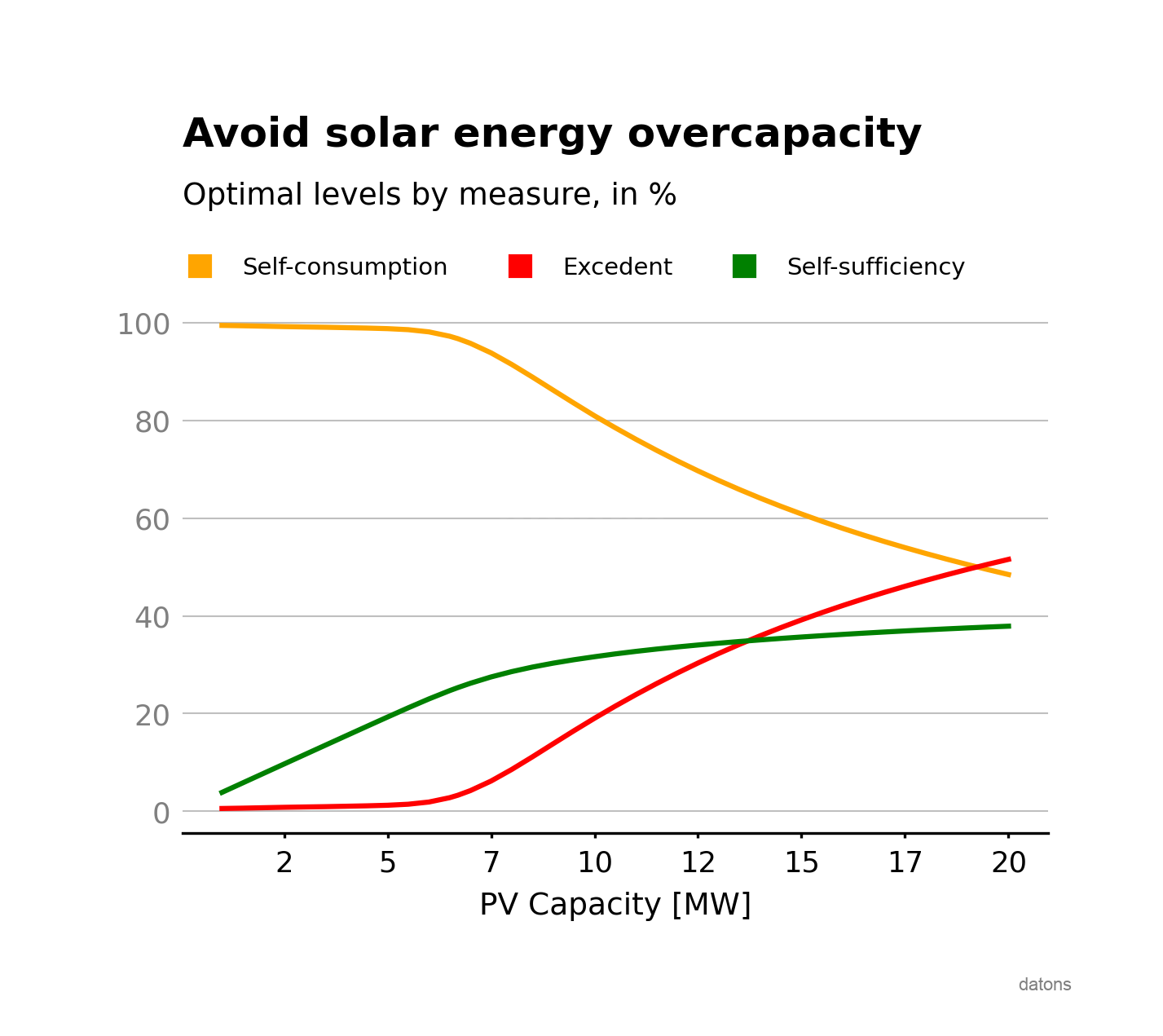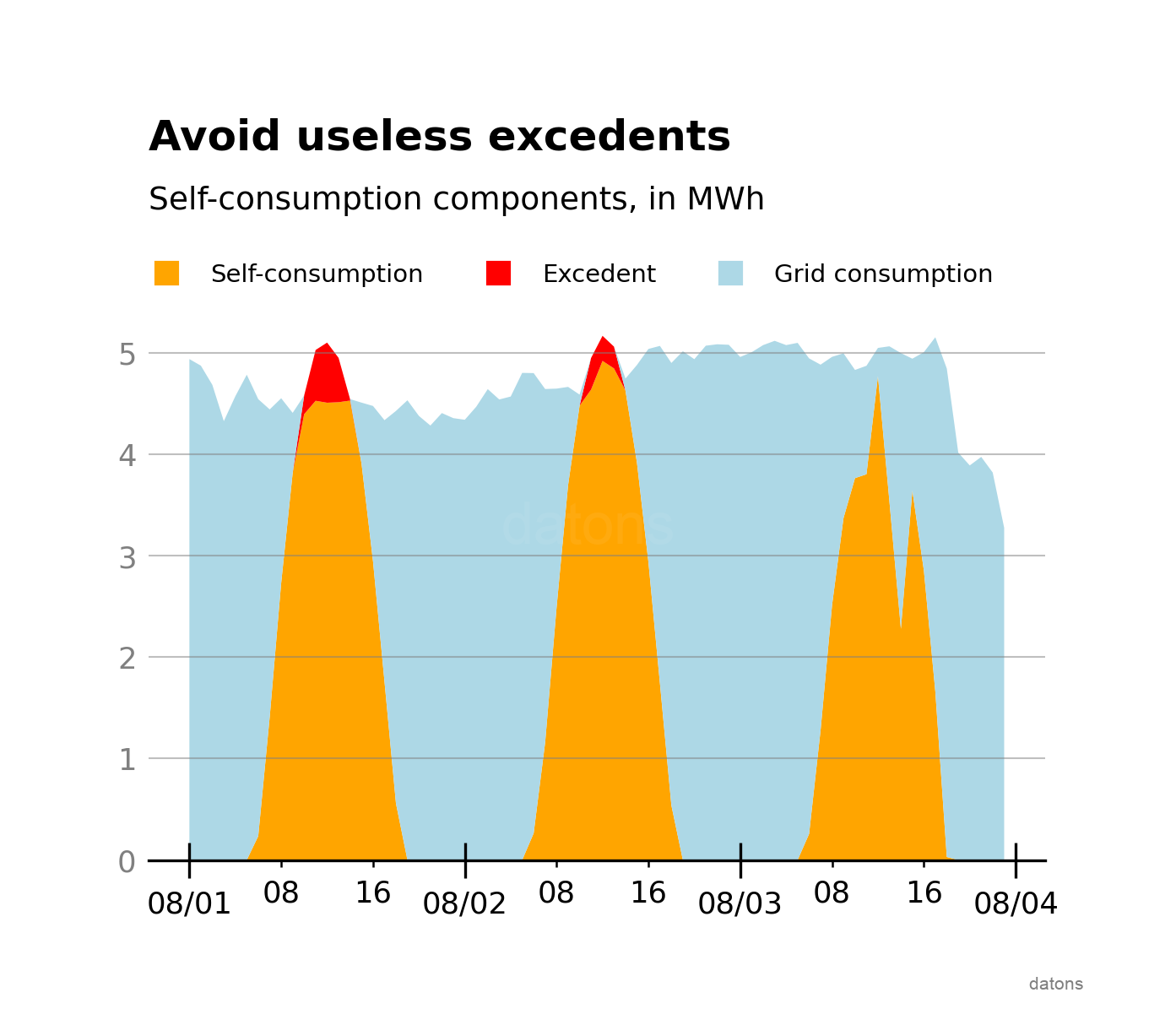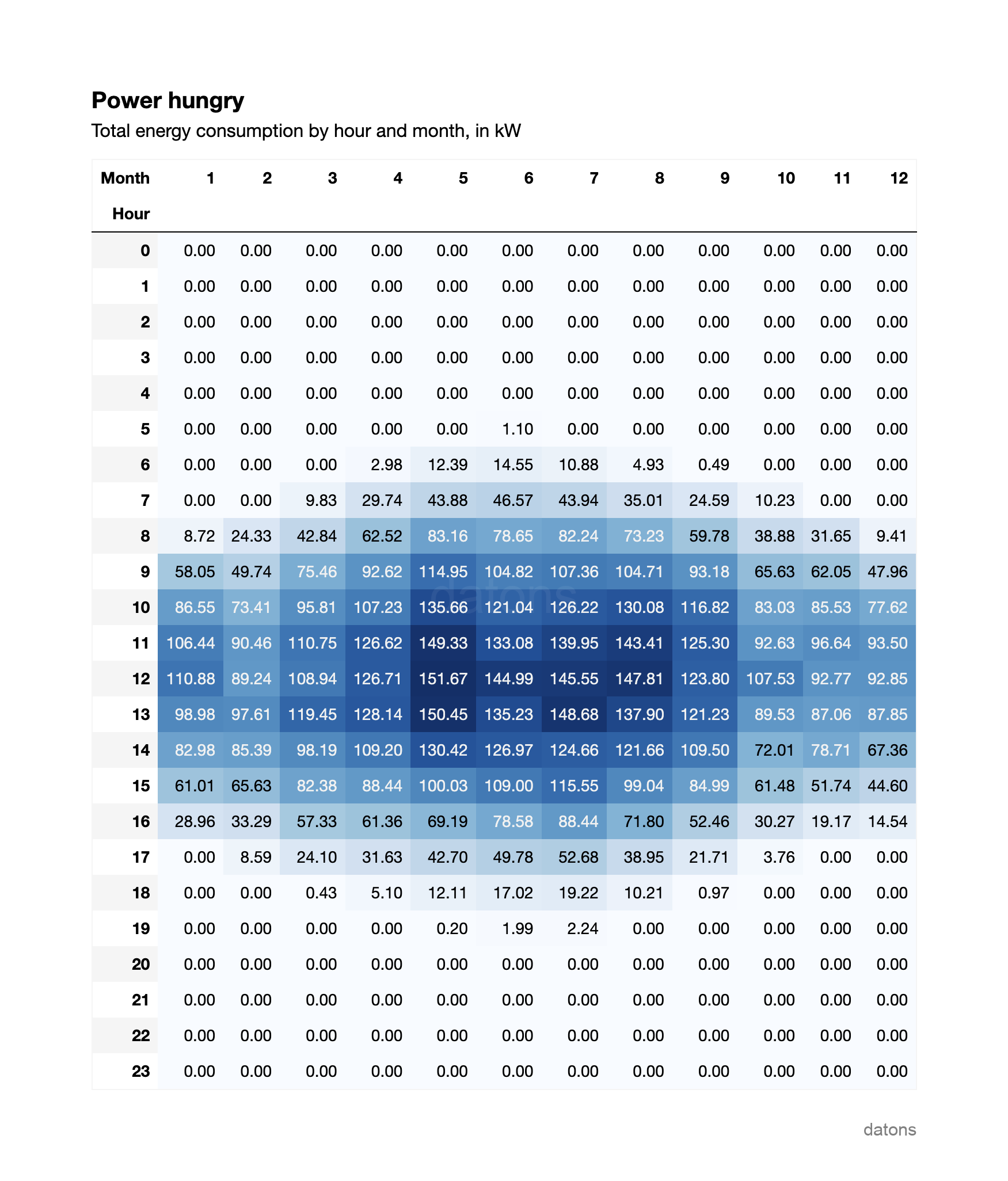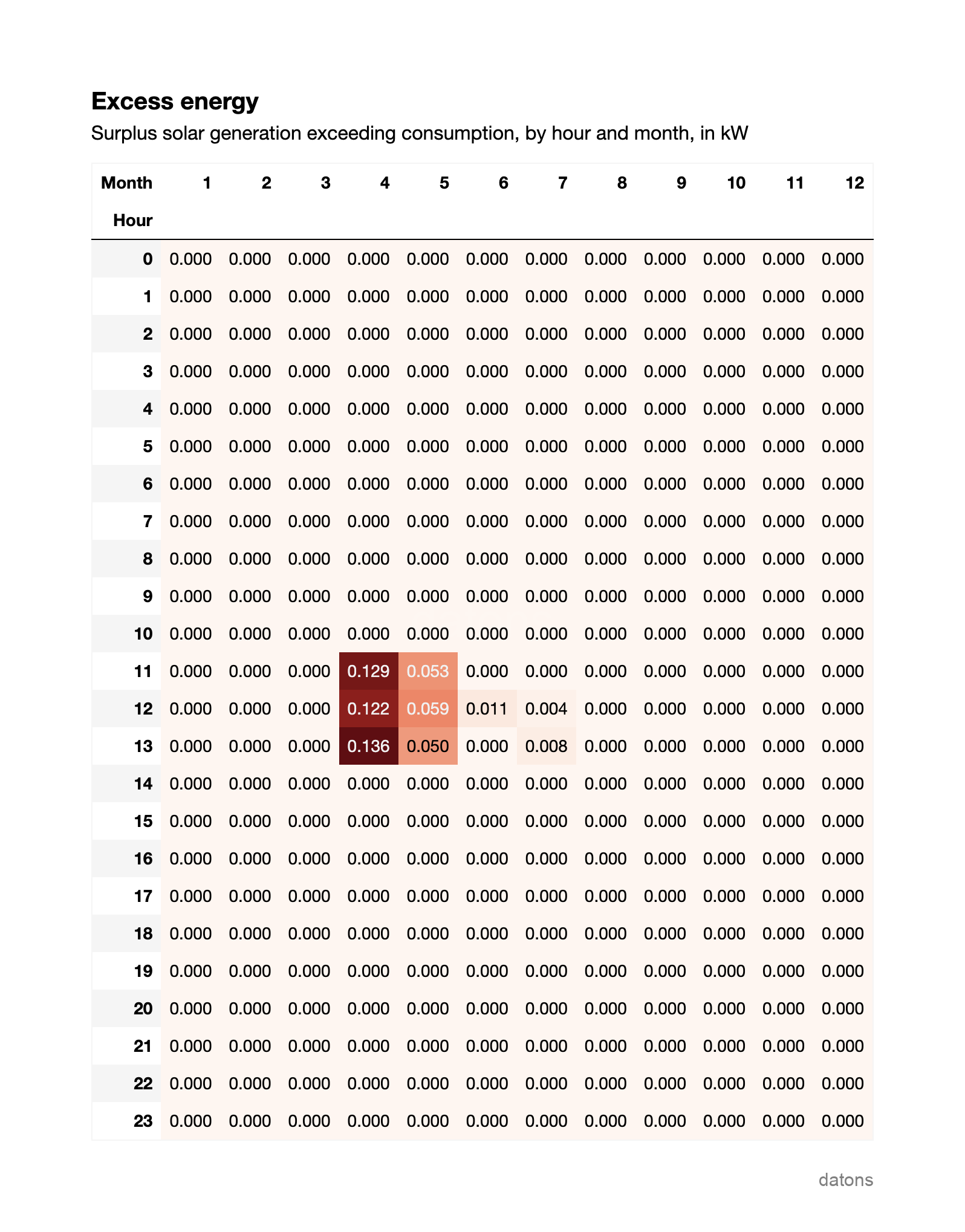This is a practical case of the services we offer at datons. In this case, we developed an algorithm in Python for Ignis Energía, a company specializing in the development of solar self-consumption projects.
You have a paper factory that consumes a lot of energy, and you’re considering installing solar panels (self-consumption) to reduce the bill.
The million-dollar question: How many solar panels should you install at the factory?

Right at the inflection point between surplus and self-sufficiency: almost 6.7 MW. In other words, it is advisable to install 6.7 MW of solar panels.
Beyond that point, the surplus energy grows faster than self-sufficiency, so installing more solar panels will not significantly increase self-consumption because your factory won’t consume more energy during sunlight hours.
Where do these calculations come from?
Taking into account solar radiation behavior, installed power, and energy consumption, we simulated self-consumption and energy surplus at the paper factory over a year.
Before diving into the annual summary, let’s look at how energy behaves daily.

Self-consumption only occurs during daylight hours, with peaks during peak hours, resulting in energy surpluses.
Now, let’s look at the annual summary by month and hour, assuming an installed power of 6.7 MW.
Components
Solar Radiation
Based on the factory’s coordinates, we obtain the daily solar radiation at each hour of the year to simulate how much solar energy can be captured.

Energy Consumption/Demand
Using the factory’s historical energy consumption data, we simulate energy demand at each hour of the year.

Self-Consumption Ratio
We calculate the ratio between consumed energy and captured solar energy to determine self-consumption.

Surpluses
If the ratio exceeds one, it is considered surplus energy because the factory does not consume all the captured solar energy.

Simulation
Since all components are calculated based on the installed power, we simulated multiple installed power levels to find the optimal one.

Conclusions
It is not necessary to oversize your investment in solar panels to maximize self-consumption. Depending on your energy consumption and solar radiation at your location, you can determine the optimal power of solar panels to install.
On the other hand, it might seem attractive to install a larger capacity of solar panels to generate surpluses and sell the excess energy. However, this strategy is not always the most profitable.
The savings generated by self-consumption are considerably higher than the revenue that could be obtained from selling surpluses, given that the prices for selling excess energy are usually low.
Additionally, in many industrial areas, grid access capacity is limited or non-existent, meaning that utilities may require the installation of zero injection devices, preventing the sale of surpluses.
Therefore, it is advisable to size the installation to minimize surpluses and maximize self-consumption, aligning with the capacities and limitations of the electrical grid.
If you want to learn more about how to calculate the optimal power for solar self-consumption, contact us.
References
Simulation developed in collaboration with David Serrano, a solar self-consumption consultant at Ignis Energía.
Take a step forward and learn to develop algorithms and applications with our digital courses in Udemy.

